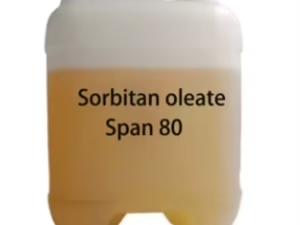Description
Sodium Stearoyl Lactylate (SSL): The Versatile Workhorse of the Food Industry
Sodium Stearoyl Lactylate, often abbreviated as SSL, is a widely used food additive that plays a crucial role in improving the texture, stability, and overall quality of a variety of processed foods. While its name might sound intimidating, SSL is derived from natural sources and is generally recognized as safe (GRAS) for consumption.
What is Sodium Stearoyl Lactylate?
SSL is an anionic surfactant, meaning it contains both hydrophilic (water-loving) and hydrophobic (fat-loving) parts in its molecular structure. This unique property allows it to act as an emulsifier, dough conditioner, and stabilizer, making it a versatile ingredient in food manufacturing.
How is it Made?
Sodium Stearoyl Lactylate is synthesized through the esterification of stearic acid (a saturated fatty acid commonly found in animal and vegetable fats) with lactic acid (a naturally occurring acid produced during fermentation). This resulting ester is then neutralized with sodium hydroxide, resulting in the final SSL product.
Key Functions and Applications in Food:
SSL boasts a range of beneficial properties, making it a valuable tool for food manufacturers. Some of its key functions and applications include:
- Emulsification: SSL helps to blend oil and water-based ingredients that would otherwise separate. This is crucial in products like salad dressings, sauces, and creamy fillings.
- Dough Conditioning: In baking, SSL strengthens gluten structure, leading to improved dough handling, increased loaf volume, and softer texture in bread, cakes, and pastries. It also helps to reduce staling, extending the shelf life of baked goods.
- Protein Stabilization: SSL can interact with proteins, preventing them from clumping and precipitating. This is particularly useful in dairy products, where it helps to maintain a smooth and stable texture.
- Fat Reduction: By improving the texture and mouthfeel of foods, SSL can allow for the reduction of fat content without sacrificing palatability.
- Aeration: In whipped toppings and frozen desserts, SSL can promote aeration, resulting in a lighter and fluffier texture.
Common Food Products Containing SSL:
You’ll likely find SSL in a variety of foods you consume regularly, including:
- Bread and baked goods
- Cake mixes
- Frostings and fillings
- Salad dressings
- Sauces and gravies
- Processed cheeses
- Whipped toppings and frozen desserts
- Meat products (as a binder)
Safety and Regulatory Status:
SSL has a long history of safe use in food and has been extensively evaluated by regulatory bodies such as the U.S. Food and Drug Administration (FDA) and the European Food Safety Authority (EFSA). It is generally considered safe for consumption at levels typically used in food products.
Conclusion:
Sodium Stearoyl Lactylate is a valuable and versatile food additive that contributes significantly to the quality, texture, and stability of a wide range of processed foods. Its ability to act as an emulsifier, dough conditioner, and stabilizer makes it an indispensable ingredient for food manufacturers aiming to deliver appealing and consistent products to consumers. While its name might sound technical, SSL is a safe and effective tool that has been used for decades to enhance the foods we enjoy.











Reviews
There are no reviews yet.